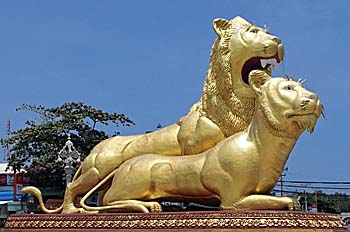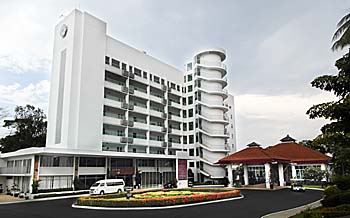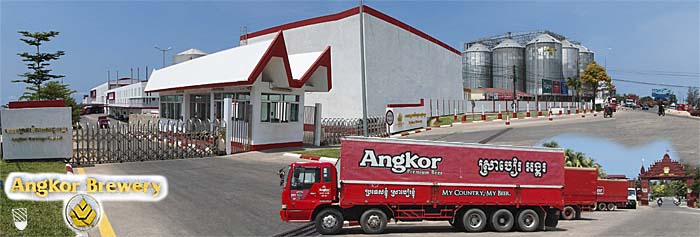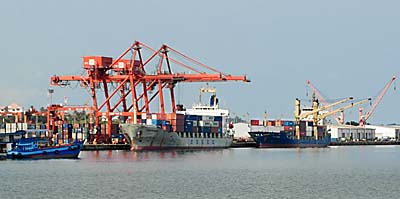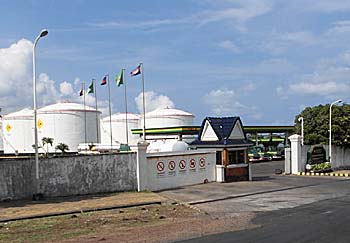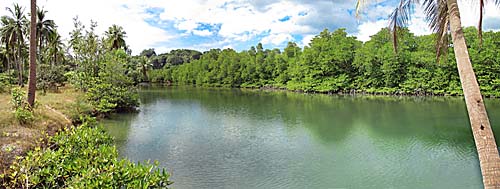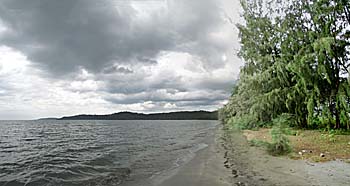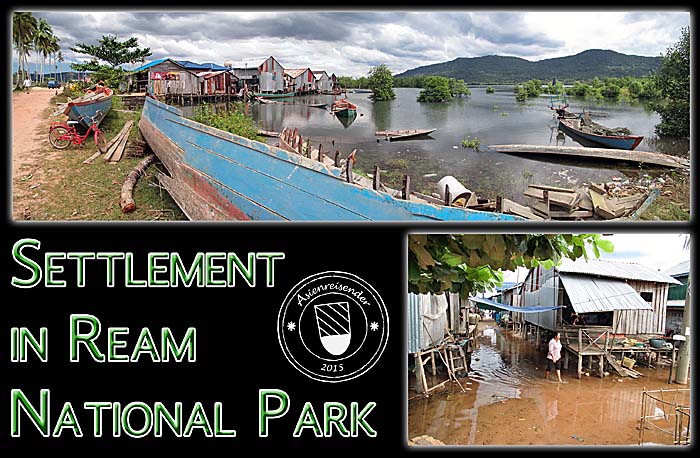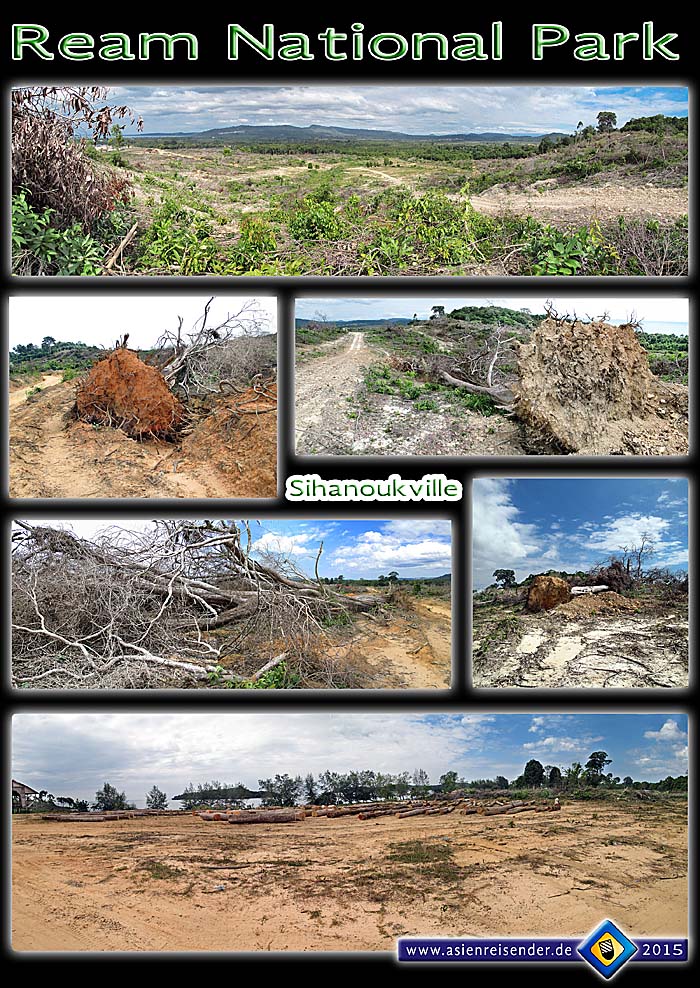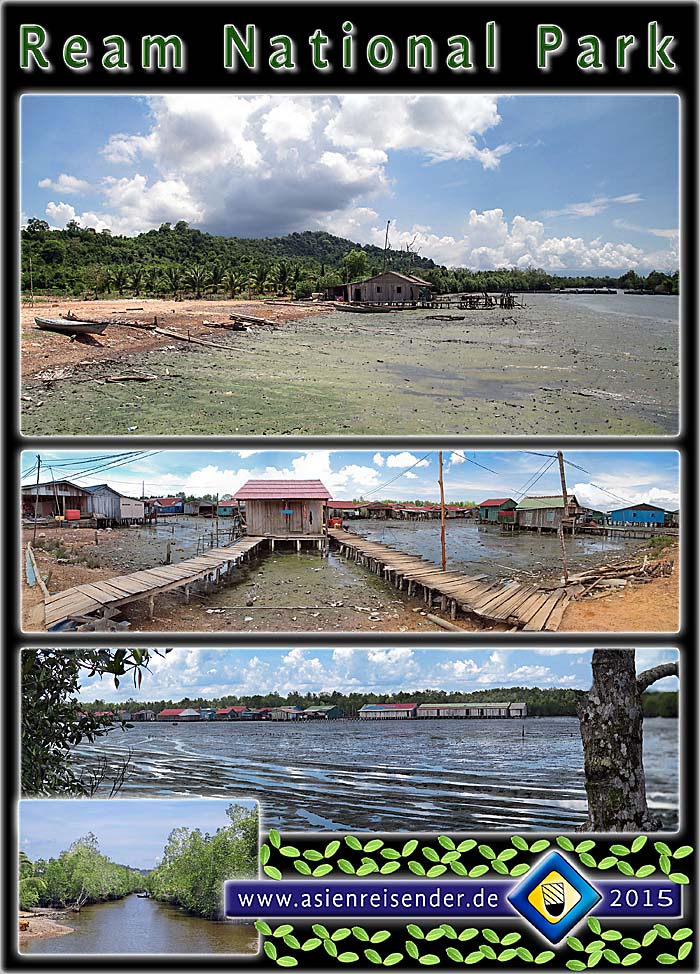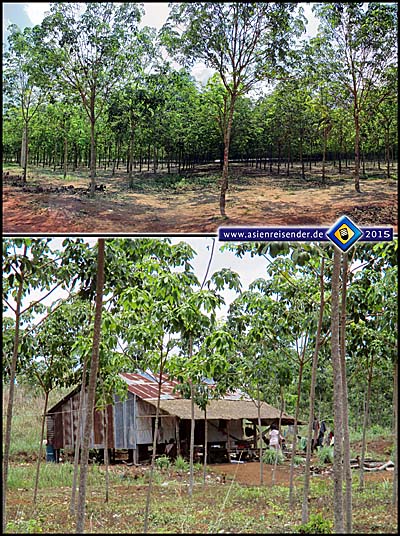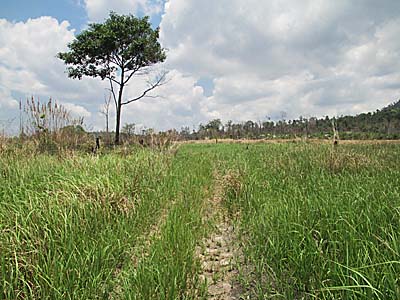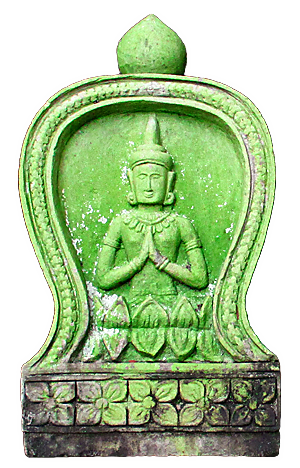A Tourist Boom
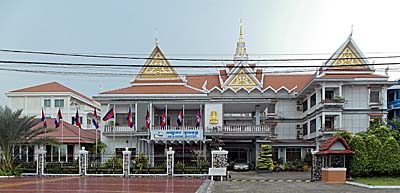
There is since years an ongoing hotel and guesthouse boom in Sihanoukville. There is good accommodation for any budged. Here a new hotel building. Image by Asienreisender, 2014
A larger part of Sihanoukville's economy is based on tourism. An increasing number of tourists from other Asian countries, from Russia, Europe, Australia and America visit Sihanoukville as one of the central touristic destinations in Cambodia. The only two other touristic alternatives along the Cambodian coastline are Kep and Koh Kong. Apart from the visiting tourists a considerable number of ex-pats from various countries settled down in the city; they make either business or enjoy their monthly old-age pensions.
However, the tourist boom does the place not only good. Although it's certainly a crucial source of income for a great deal of small restaurant and bar owners, it's also attracting big investments. Together with the touristic party din, booze, drug abuse, prostitution and gambling dominate the scene. In fact, the touristic beaches give an ugly impression. Consumerism everywhere, and the only cheap thing here is alcohol. And accommodation. There are plenty of hotels and guesthouses for all budgets. Sihanoukville is kind of a Cambodian Pattaya.
Mangroves

The surroundings of the city give an impression how the whole place must have looked in the time before 1960 - dominated by mangrove forests. There were, of course, the sand beaches already. Image by Asienreisender, 2014
On weekdays and holidays, particularly the songkran holidays (here: Khmer New Year), many wealthy Cambodians from Phnom Penh spent time in Sihanoukville. The national road 4 becomes then more dangerous than ever.
Sihanoukville's beaches, let's say Serendipity and Occheutreal beaches, compared in April 2014 with a first visit in January 2007, the scene totally changed. A couple of years ago there was already much beachlife, but the buildings were simpler. Bamboo and wood construction changed to a lot of plastic and concret. It all looks much more artificial now as it did before, besides most of the places look a bit run-down.
The surroundings also became built-up - everywhere are new restaurants of international style like pizzerias or burger king-like fast-food restaurants, bars, bars and more bars, mini-supermarkets, souvenir shops and guesthouses.
It might look somewhat better on some of the many islands around, but of course they all are part of touristic Sihanoukville at the end.
Serendipity Beach

Serendipity Beach a few years ago. Already busy and touristic, but now there is even more tourist activity. Image by Asienreisender, 1/2007
Snake House
The Animals of Snake House

A choice of the animals of Snake House: an owl (same kind seen on 4000 Islands), a mildly venomous Golden Tree Snake, a slow loris, a flying fox with a length of some 30cm, a Mangrove Cat Snake (mildly venomous as well), a very excited young cobra, a crocodile and another cobra. Images and photocomposition by Asienreisender, 2014
Very surprisingly, driving down Soviet Street from Victory Hill, there is a Russian restaurant left hand, called 'Snake House'. It's such an extraordinary place that it is worth to be mentioned in some detail.
Snake House is a restaurant which offers a variety of Russion food. The place is styled following a greenhouse concept. It's a quiet, open, very green place, coined by a very large aquarium in the middle and a great number of terrariums and cages with different Southeast Asian animals inside. The most of them are reptiles, but there are also mammals and birds. It's a green oasis in Sihanoukville which includes a larger spot and extends far behind the restaurant itself. In the back there are more cages and terrariums and a trench, filled with water in which quite some crocodiles are living. There are also fish, some birds of the jungle, a monkey, some slow loris' and different snakes, most of them poisonous cobras, vipers and kraits. Most of the cages are labelled with a plaque which gives the name and some basic information of the animal.
The whole place is clean and looks for beeing good cared for. And it's defenitely a lot of work to keep such a zoo up. Besides, the food in the restaurant is fine, so far I tried it. Russian cuisine has defenitely it's highlights.
Kbal Chhay Waterfall
One of Sihanoukville's recreation 'attractions' is Kbal Chhay Waterfall, a few kilometers east of town. Following the NH4, some 5km before Hun Sen Boulevard, a dirt road turns left into the green. Following this road a few kilometers, one reaches a large parking, where the fall is just behind. On half of the way there is the unavoidable ticket booth, where one has to pay money for nothing.
The waterfall itself is a bigger fall over a few cascades, the biggest of them about a few meters deep. Some pools, good for swashing, are there. Even in the driest time of the year the river carries some water. In rainy season it must be a powerfull spectacle. The sandstones here look, similar to Popokvil Waterfall on Bokor Mountain, neatly cut. Maybe the site served as a quarry in former times.
Coming from the parking, where the first foodstalls are placed, there is a rough wooden bridge over the river. On the other side the stream is paralleled by many more foodstalls. The bit food which is to buy here is heavily overprized and of no good quality. It's probably so that the stall owners have to pay extra permission for running their business here. Most of the places here sell drinks only. The Khmer visitors who come here usually in bigger groups bring their own food and leave their litter where they eat. Wooden shacks are for rent, most of them are equipped with hammocks. Here and there a loudspeaker cares for the necessary din. An overall impression is similar to the site of Teuk Chhou Rapids near Kampot, but Kbal Chhay Waterfall is defenitely much more impressive.
Kbal Chhay Waterfall
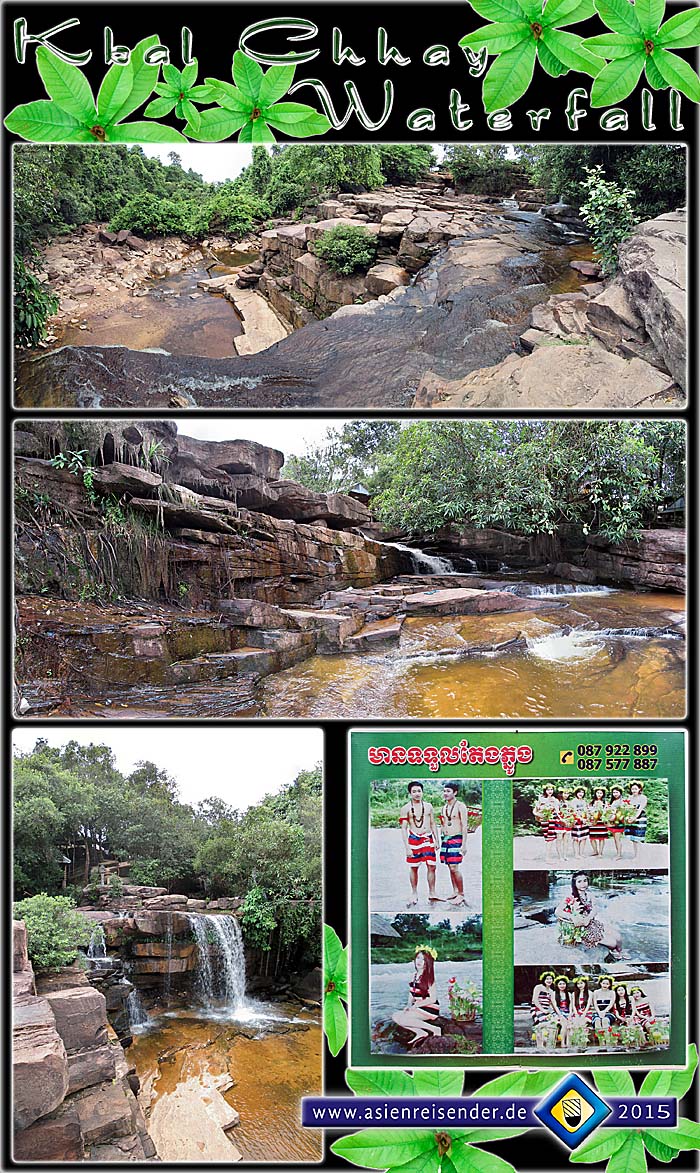
Waterfall and quarry? Kbal Chhay Falls. For those who like it, they can have an organized hula-hula faked paradise experience with unforgettable photos. Images and photocomposition by Asienreisender, 5/2015
Safety

The 'Same Same But Different' bar, restaurant and guesthouse at Sihanoukville's Serendipity Beach. Image by Asienreisender, 2007
The security situation in Sihanoukville is not relaxed. Cambodia generally is a country in which criminality and violence play a considerable role, much more than in neighbouring Thailand. Sihanoukville seems to be a crystallization point of criminality. Booming business, gambling, drugs and prostitution attracts dubious people. Records about crimes against tourists alone are plenty in Sihanoukville. People, among them many tourists, get mugged and sometimes also killed. Not only a high number of websources speak for that. The travel guides already years ago informed about murders and security risks. Personally I have heared various hair-raising stories about violent robberies in Sihanoukville from victims.
Besides more serious, physically violent crimes one has to be aware of pickpockets and snatch-and-run thefts. Particularly at the beaches are belongins not safe if one does not have always a close eye on them. When swimming it's a must to have a guard for anything left at the beach.
On the motorbike it's too risky to put things in the front basket or having a bag loosely over the shoulder. Offenders sometimes snap it while passing by and risk or even enforce a dangerous accident for the victim.
The Gambling Passion

Another reason to visit Sihanoukville: gambling. And the casino always wins. Image by Asienreisender, 4/2014
